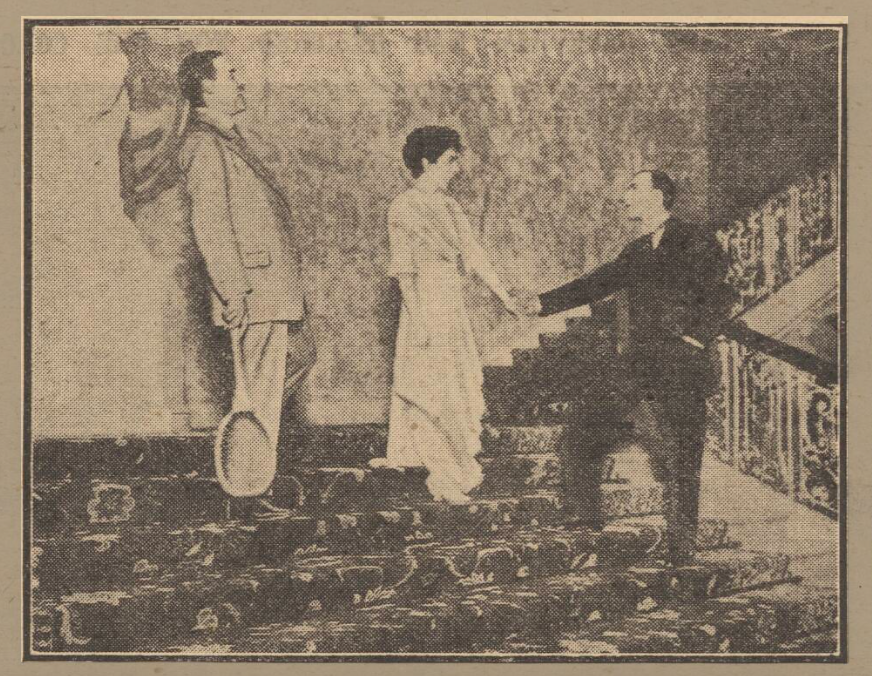|
More archive fun! Ernest Hutchinson's 1913 short play Votes for Children has intrigued me since I first read the manuscript in the LCP Collection at the British Library. Described with some glee in the LCO Readers Report as "a lively skit upon the agitation of female militants for votes", the piece is set in the offices of the fictional CSPU - the Children's Social and Political Union - and requires a mixed cast of children and adults. Hutchinson subtitles the play "A Comedy of the Future", and in this futuristic world children are campaigning for the right to vote at age six, the Prime Minister is a woman, and her husband who is the Home Secretary has been kidnapped by the leader of the CSPU, their daughter Rosabel. I would describe it as a gently pointed pastiche of the WSPU and popular tropes surrounding militants. The children in the play stage photographs of the arrest of one of their peers, send two children with terrible colds to a classical music concert to disrupt it by sneezing and coughing, and organise a parade of motorised prams outside a jail where child suffrage prisoners are being held. While it could be seen to be mocking the suffrage movement, the performance conditions surrounding that make it seem unlikely to have been considered anti-suffrage propaganda. The play was performed at a special event held by Actresses' Franchise League member Italia Conti's students at the Little Theatre, a venue managed by Actresses' Franchise League member Gertrude Kingston and situated opposite the Actresses' Franchise League offices in central London. Kingston opened the theatre in 1910 with a production of Lysistrata that had been given a suffragist twist by Laurence Housman. Bernard Shaw’s Fanny’s First Play opened at the Little Theatre in April 1911 with Actresses' Franchise League members Lillah McCarthy and Cicely Hamilton were in the cast. The play ran for 622 performances, the longest run of any of Shaw’s plays. By taking a playful approach to political issues and activism for an audience that not only included the young performers but also their friends and families supporting in the audience, Conti’s decision to stage Votes for Children shows that she was unafraid bring her suffragist sympathies into her professional work as an educator. She was also introducing her students to the stage as a place to engage directly and confidently with political ideas. Children were regular participants in suffrage entertainments, and suffrage societies specifically for children and young people included the Drummers Union, founded in 1909 by four members of the WSPU Drum and Fife Band, which welcomed girls and boys from ages 6 to 21 "to join with others in doing something, however small, towards breaking down sex and class prejudice" (Drummers Union pamphlet, 1909). Children performed as dancers, as musicians, as newspaper sellers, and performances of new suffrage plays were written and staged for and by the members of the Drummers Union and the Young Purple, White and Green Club, which were both affiliated with the WSPU. But who was Ernest Hutchinson, and why was Conti performing a play written by him? It seems that their working relationship began in 1911, when Hutchinson won a competition set by Conti for a short play that needed "no scenery or stage accessories, and depends entirely for its effect on the art of the author and the actors" (Freeman's Journal, 3 May 1911, p. 5). His play The Fulfilment narrowly beat an entry by an Irish female playwright The Daily Mirror was among many papers reporting Hutchinson's success: TBC! Hutchinson's play was produced as part of a mixed bill on the stairs, including a recitation by suffragist actor Henry Ainley, some dances by Conti's students, and a musical extravaganza written by Rutland Barrington. Hutchinson's next play
0 Comments
Leave a Reply. |
NaomiThoughts, reflections, bits of research Archives
April 2023
Categories
All
|

 RSS Feed
RSS Feed